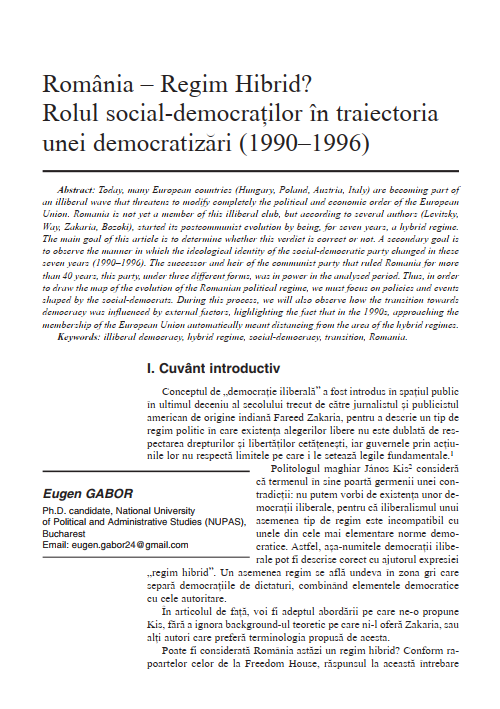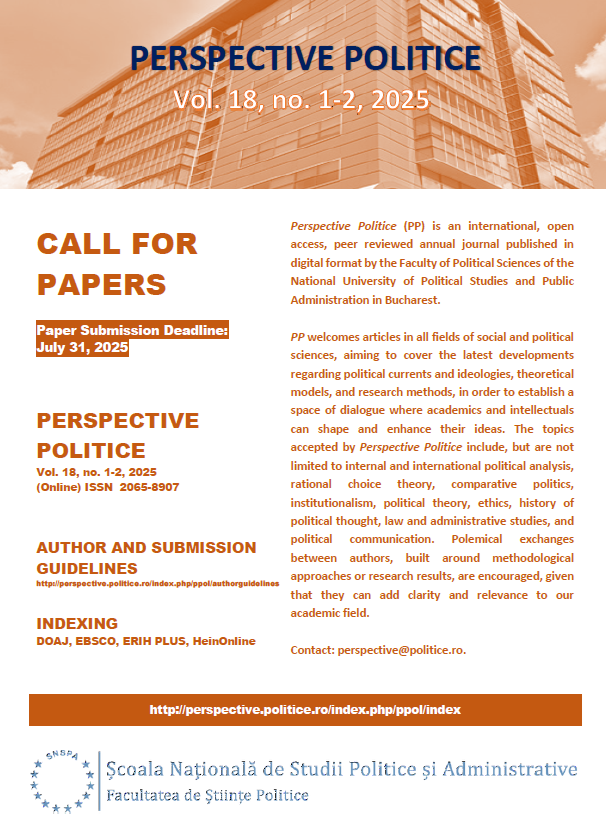România – Regim Hibrid? Rolul social-democratilor în traiectoria unei democratizari (1990–1996)
Abstract
Today, many European countries (Hungary, Poland, Austria, Italy) are becoming part of an illiberal wave that threatens to modify completely the political and economic order of the European Union. Romania is not yet a member of this illiberal club, but according to several authors (Levitsky, Way, Zakaria, Bozoki), started its postcommunist evolution by being, for seven years, a hybrid regime. The main goal of this article is to determine whether this verdict is correct or not. A secondary goal is to observe the manner in which the ideological identity of the social-democratic party changed in these seven years (1990–1996). The successor and heir of the communist party that ruled Romania for more than 40 years, this party, under three different forms, was in power in the analysed period. Thus, in order to draw the map of the evolution of the Romanian political regime, we must focus on policies and events shaped by the social-democrats. During this process, we will also observe how the transition towards democracy was influenced by external factors, highlighting the fact that in the 1990s, approaching the membership of the European Union automatically meant distancing from the area of the hybrid regimes.




